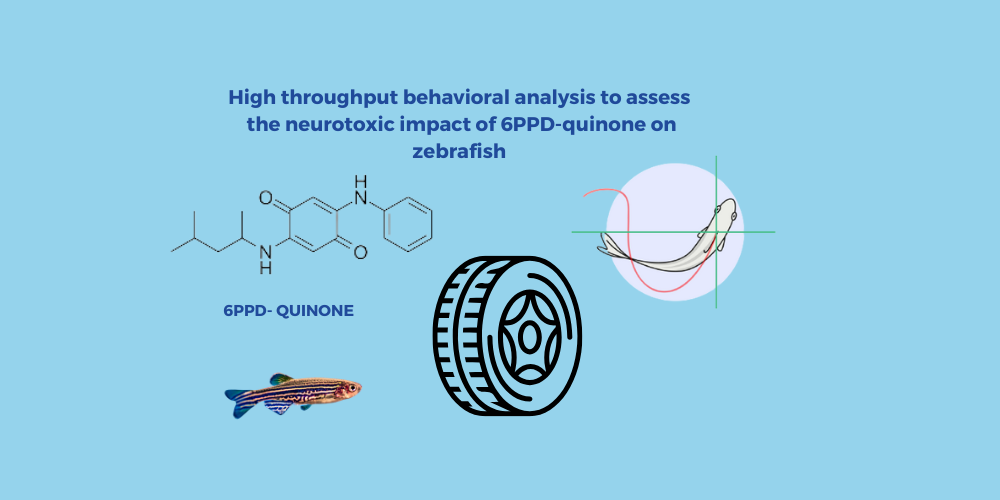Why is the circadian rhythm important?
The circadian rhythm is the body’s internal clock involving a 24-hour cycle that regulates physical, mental and behavioural changes in living organisms; it is essential for the sleep/wake cycle and metabolism influencing hormone release and other physiological functions. Disturbances in the circadian rhythm is a condition that can affect people’s sleeping behaviours and 50% of such sleep disorders involve insomnia (Institute of Medicine Committee on Sleep Medicine, 2006); therefore, understanding the mechanisms that regulate the internal clock is essential for treatment of such conditions.
Zebrafish larvae as a model for mammalian circadian rhythm
Due to the complexity of the human body it is necessary for whole systems rather than individual cells to be studied in order to understand how different systems within the body communicate. Much work has been performed on cell-specific models in vitro; however, this is not always translatable in vivo as it does not account for any non-cell autonomous conversation, such as seen in the mammalian system. Mosser et al., (2019) recently used a genetically modified zebrafish larvae model Tg(per3:luc). This model overcomes other limitations by combining the in vivo relevance of whole-animal assays with the ability to observe the central nervous system directly - due to the transparency of the CNS in zebrafish larvae (Kaneko and Cahill, 2005).
A molecular luminescence marker (luc) was incorporated into the period 3 gene (per3) of the zebrafish – a gene known to be involved in circadian regulation. With a high degree of genetic similarity to humans, this zebrafish model enabled the researchers to observe molecular changes and behavioural changes that occur in the circadian rhythm in the presence of different drugs. This research contributes to improving the understanding behind the regulatory controls of the sleep/wake cycle and the resulting effects that occur in the body.
354 compounds affect the circadian rhythm in zebrafish larvae
Using the genetically manipulated luminescence approach and an extensive screen of small molecule drugs, the researchers identified 354 compounds that had an impact on the circadian period length, phase or amplitude. Interestingly, they were also able to identify that the immune system impacts on the circadian clock. This is thought to be a novel finding because although it was already known that the circadian clock affects the immune system, this bi-directional interaction was not known and may lead to interesting future studies using this model.
All conditions remained consistent during development and zebrafish larvae were raised on a 14-hour day and 10 hour-hour dark cycle at a temperature of 22 degrees. On day 6 the larvae were individually placed into a multi-well well plate with appropriate media and the drug to be tested vs media only. The luminescence emitted by the activation of the per3 gene (involved in circadian regulation) was measured and identified that 354 compounds affected the biological activity of the per3 gene.
Compounds that affect the circadian period can also affect behavioral activity
Using an established and controlled behavioral assay (Prober et al., 2006) that removed the masking effect of direct light, Masser et al. were able to show that some compounds led to an increase in locomotor activity period length. Interestingly, some of these drugs had also shown an increase in period length in the molecular luminescence assay.
The experimental conditions saw that the zebrafish larvae were raised as previously described above and then housed in individual wells, in a chamber at 28.5 degrees in either constant darkness (DD) or 14:10-hour light/dark (LD) cycles for comparison. This housing arrangement enabled individual automated tracking of each larvae, ensuring that they did not interfere with their mates. The video tracking system, VideoTrack automatically monitored locomotor activity of each zebrafish using quantisation mode, the camera and plate were housed inside a specifically designed ZebraBox to control experiment conditions.

Experimental conditions for zebrafish larvae locomotor activity are precisely controlled
The circadian rhythm in vertebrates is maintained by internal molecular mechanisms, but external cues such as light and temperature can alter it. In this regard, it is essential that experimental conditions are controlled. This was performed using the ZebraBox which housed the camera for the VideoTrack and the multi-well plate containing the zebrafish larvae. The ZebraBox is specifically designed for high-throughput analysis of zebrafish larvae simultaneously in multi-well plates, enabling full control over the required experimental conditions; thus, enabling the withdrawal of direct light in the dark conditions. This ensures consistency and reduces inter-experimental variation.
Exciting revelations to be further explored in the sleep-wake cycle
Interestingly, some of the changes that were observed in this study using intact fish were not seen when administering the compounds to cells only from these zebrafish or other mammalian cell-lines. This provides compelling evidence for the necessity of the use of intact models for further expansion on the scientific knowledge in this field. This study demonstrates that there is interplay between different biological systems and the circadian clock – the bi-directional interaction between the immune system pathway and circadian rhythm provides an exciting possibility for future research in this field and intact mammalian models. Understanding the biological interactions in these models will assist in understanding the mechanisms that underpin sleeping dysfunction.
References
-
INSTITUTE OF MEDICINE COMMITTEE ON SLEEP MEDICINE. 2006. The National Academies Collection: Reports funded by National Institutes of Health. In: COLTEN, H. R. & ALTEVOGT, B. M. (eds.) Sleep Disorders and Sleep Deprivation: an unmet public health problem. Washington (DC): National Academies Press (US).
-
KANEKO, M. & CAHILL, G. M. 2005. Light-dependent development of circadian gene expression in transgenic zebrafish. PLoS biology, 3, e34-e34.
-
MOSSER, E. A., CHIU, C. N., TAMAI, T. K., HIROTA, T., LI, S., HUI, M., WANG, A., SINGH, C., GIOVANNI, A., KAY, S. A. & PROBER, D. A. 2019. Identification of pathways that regulate circadian rhythms using a larval zebrafish small molecule screen. Sci Rep, 9, 12405.
-
PROBER, D. A., RIHEL, J., ONAH, A. A., SUNG, R.-J. & SCHIER, A. F. 2006. Hypocretin/Orexin overexpression induces an insomnia-like phenotype in zebrafish. The Journal of Neuroscience, 26, 13400.





